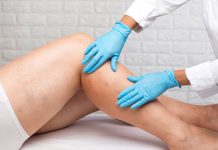Learn about these five rare diseases to support governments, scientists and healthcare professionals to find treatments
Spreading awareness crucially enables individuals to understand if they’re suffering from a something they can cure. Sadly, many rare diseases are without cures or treatment at this point in time, due to the significant absence of people available to participate in scientific studies.
In this article, I look at five diseases that need more scientific investigation, funding and public understanding.
1. Stoneman Syndrome
Frequency: one in two million people.
Fibrodysplasia ossificans progressive (FOP), colloquially known as Stoneman Syndrome, slowly turns connective tissue such as tendons, muscles and ligaments into bone.
The progression of the disorders starts from the neck to shoulders, and gradually proceeds to lower parts of the body and finally to the legs. Body movements will be restricted progressively because the joints get affected with the disorder. The patient finds it difficult to open mouth, which in turn causes trouble while eating and speaking.
A second skeleton grows over the first, in a process known as heterotopic ossification (HO) – this is permanent, and surgical efforts to remove bone growth can trigger immense bone growth due to the invasiveness of the procedure. Individuals with this syndrome can lose their mobility after a minor fall or a small accident, as bone growth is stimulated.
As this disorder is affected very rarely, the symptoms of this disorder can be diagnosed as fibrosis or cancer. Misdiagnosis will lead to biopsies – endangering the individual further.
This condition currently has no treatment options, due to the rarity of the disease which affects one in every two million people.
2. Alice In Wonderland Syndrome (AIWS)
Frequency: currently unknown.
Dr John Todd, a British psychiatrist, first described AIWS in 1955. Todd gave it this name by way of the famous novel by Lewis Carroll, as the illness resembles the events experienced by Alice.
The most prominent and often most disturbing symptom is that of altered body image: the sufferer will find that they are confused as to the size and shape of their body parts. The parts usually mentioned are the head and hands; growth seems more usual than shrinkage.
The second major symptom is the distortion of visual perception. The eyes themselves are normal, but the sufferer ‘sees’ objects with the wrong size or shape and/or finds that perspective is incorrect. This can mean that people, cars, buildings, look smaller or larger than they should be, or that distances look incorrect. For example, a corridor may appear to be very long, or the ground may appear too close.

Other symptoms include:
- Distorted time perception; time moving quickly or slowly.
- Distorted touch perception, e.g. a feeling that the ground is ‘spongy’ under the feet or that the sensation received from touching something is simply incorrect or unrecognised.
- Distorted sound perception.
There is no treatment for AIWS, but there are treatments for possible causes.
3. Hutchinson-Gilford Progeria Syndrome (HGPS)
Frequency: one in four million. More than 130 cases reported in scientific literature globally since 1886.
HGPS is an extremely rare genetic disorder in which the symptoms resemble aspects of ageing at a very early age. The condition affects one in eight million live births and those born with HGPS typically live to their mid-teens to early twenties.
This genetic condition means that there is a rapid dramatic appearance of ageing, beginning childhood. The characteristic facial appearance includes prominent eyes, a thin beaky nose, thin lips, small chin and protruding ears.
Symptoms include:
- Alopecia (hair loss)
- Aged-looking skin
- Joint abnormalities
- Loss of fat under the skin (subcutaneous fat)
- Kidney failure
- Loss of eyesight
- Brittle, fragile bones
There is currently no known cure.
4. Alkaptonuria
Frequency: one in one million people globally.
Alkaptonuria, or “black urine disease”, is a very rare inherited disorder that prevents the body from fully breaking down two protein building blocks (amino acids) called tyrosine and phenylalanine.
It results in a build-up of a chemical called homogentisic acid in the body.
This can turn urine and parts of the body a dark colour and lead to a range of problems over time.
Amino acids are usually broken down in a series of chemical reactions. But in alkaptonuria, a substance produced along the way, homogentisic acid, cannot be broken down any further. This is because the enzyme that normally breaks it down does not work properly. Enzymes are proteins that make chemical reactions happen.
It can build up in almost any area of the body, including the cartilage, tendons, bones, nails, ears and heart. It stains the tissues dark and causes a wide range of problems.
People with this condition have a normal life expectancy, but with a lesser quality of life.
There is currently no specific treatment or cure, but a certain diet is recommended to decrease the build up.
5. Chronic Focal Encephalitis (Rasmussen’s Encephalitis)
Frequency: In Germany, it is 2.4 cases per 10 million people, and in the UK it is 1.7 per 10 million people.
Rasmussen’s encephalitis usually occurs in children under the age of 10 (more rarely in adolescents and adults) and is characterized by frequent and severe seizures, loss of motor skills and speech, paralysis on one side of the body (hemiparesis), inflammation of the brain (encephalitis), and mental deterioration. It can lead to the destruction or removal of a part of the affected child’s brain.
Most individuals with Rasmussen’s encephalitis will experience frequent seizures and progressive brain damage in the affected hemisphere of the brain over the course of the first 8 to 12 months, and then enter a phase of permanent, but stable, neurological deficits.
There are treatments to decrease brain inflammation at the acute stage, but there is no treatment to ultimately prevent disability.












More information on dandy walker syndrome please email ASAP
Hi Ross, please check out our latest article on Dandy-Walker Syndrome https://www.openaccessgovernment.org/what-is-dandy-walker-syndrome-everything-you-need-to-know/123092/
Thank you for your comment.